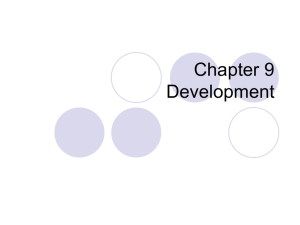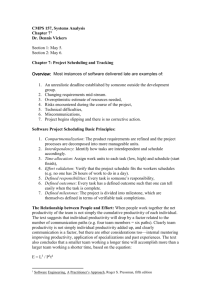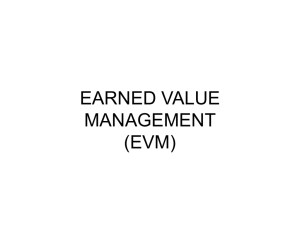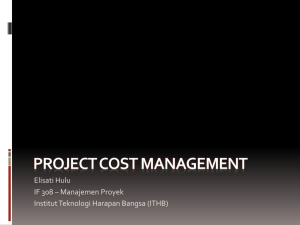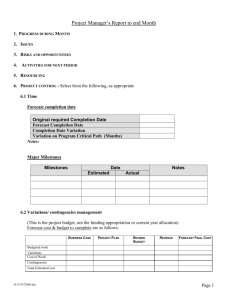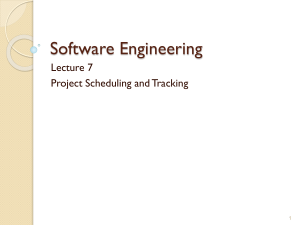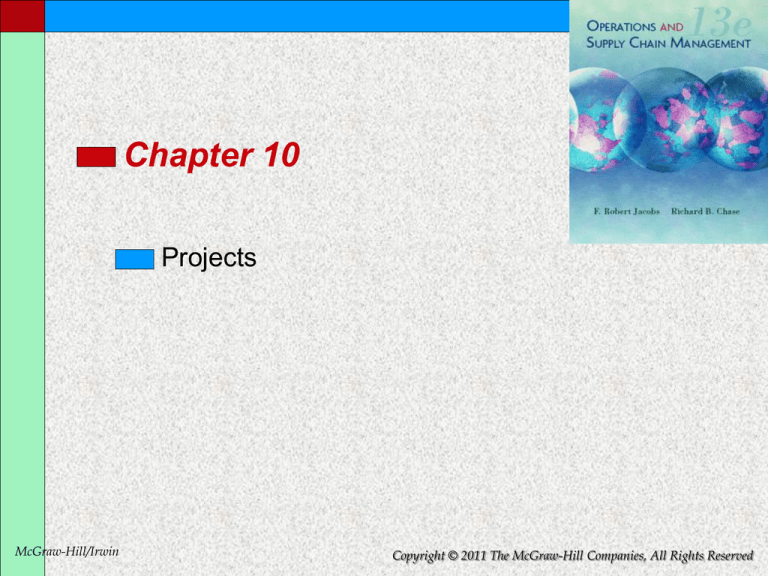
Chapter 10
Projects
McGraw-Hill/Irwin
Copyright © 2011 The McGraw-Hill Companies, All Rights Reserved
Learning Objectives
1. Explain what project management is and
why it is important.
2. Identify the different ways projects can be
structured.
3. Describe how projects are organized into
major subprojects.
4. Understand what a project milestone is.
5. Determine the “critical path” for a project.
6. Demonstrate how to “crash,” or reduce the
length, of a project.
10-2
What is Project Management?
• Project: a series of related jobs usually
directed toward some major output and
requiring a significant period of time to
perform
• Project management: the
management activities of planning,
directing, and controlling resources
(people, equipment, material) to meet
the technical, cost, and time constraints
of a project
LO 1
10-3
Types of Development Projects
LO 2
10-4
Structuring Projects
•
•
•
Pure project
Functional project
Matrix project
LO 2
10-5
Pure Project
• Advantages
–
–
–
–
The project manager has full authority
Team members report to one boss
Shortened communication lines
Team pride, motivation, and commitment are high
• Disadvantages
–
–
–
–
Duplication of resources
Organizational goals and policies are ignored
Lack of technology transfer
Team members have no functional area "home"
LO 2
10-6
Functional Project
LO 2
10-7
Functional Project Continued
• Advantages
–
–
–
–
A team member can work on several projects
Technical expertise maintained in functional area
Functional area is “home” after project completed
Critical mass of specialized knowledge
• Disadvantages
– Aspects of the project that are not directly related to
the functional area get short-changed
– Motivation of team members is often weak
– Needs of the client are secondary and are
responded to slowly
LO 2
10-8
Matrix Project
LO 2
10-9
Matrix Project Continued
• Advantages
–
–
–
–
–
Better communications between functional areas
Project manager held responsible for success
Duplication of resources is minimized
Functional “home” for team members
Policies of the parent organization are followed
• Disadvantages
– Too many bosses
– Depends on project manager’s negotiating skills
– Potential for sub-optimization
LO 2
10-10
Work Breakdown Structure
• Statement of work (SOW): a written
description of the objectives to be
achieved
• Task: a further subdivision of a project
– Usually shorter than several months
– Performed by one group or organization
• Work package: a group of activities
combined to be assignable to a single
organizational unit
LO 3
10-11
Work Breakdown Structure Continued
• Project milestones: specific events on
the project
• Work breakdown structure (WBS):
defines the hierarchy of project tasks,
subtasks, and work packages
• Activities: pieces of work that consume
time
– Defined within the context of the WBS
LO 4
10-12
An Example of a Work Breakdown
Structure
LO 3
10-13
Work Breakdown Structure, Large
Optical Scanner Design
LO 3
10-14
Project Control Charts
• Charts are useful because their visual
presentation is easily understood
• Software is available to create the
charts
• Gantt chart: a bar chart showing both
the amount of time involved and the
sequence in which activities can be
performed
LO 3
10-15
Sample of Graphic Project Reports
LO 3
10-16
Earned Value Management (EVM)
• A technique for measuring project
progress in an objective manner
• Has the ability to combine
measurements of scope, schedule, and
cost in a project
• Provides a method for evaluating the
relative success of a project at a point
in time
LO 3
10-17
Essential Features of any EVM
Implementation
1. A project plan that identifies the
activities to be accomplished
2. A valuation of each activity work
3. Predefined earning or costing rules to
quantify the accomplishment of work
LO 3
10-18
Earned Value Management Charts
LO 3
10-19
Project Tracking Without EVM
• Chart A shows the cumulative cost budget for
the project as a function of time
– Blue line, labeled BCWS
• Also shows the cumulative actual cost of the
project
– Red line
• Appears project was over budget through
week 4 and then under budget
• What is missing is any understanding of how
much work has been accomplished
LO 3
10-20
Project Tracking With EVM
• Chart B shows the BCWS curve along
with the BCWP curve from chart A
• Technical performance started more
rapidly than planned but then slowed
significantly and feel behind at week 7
• Chart illustrates the schedule
performance aspect of EVM
LO 3
10-21
Project Tracking With EVM Continued
• Chart C shows the same BCWP curve
with actual cost data
• Project is actually under budget,
relative to the amount of work
accomplished
• Chart D shows all three curves together
– Typical for EVM line charts
LO 3
10-22
Example: Earned Value
Management
LO 3
10-23
Example: Budgeted Cost of Work
Scheduled (BCWS)
A.
B.
C.
D.
100% of $18K = $18K
100% of $10K = $10K
80% of $20K = $16K
15% of $40K = $6K
BCWS = $18K+$10K+$16K+$6K = $50K
LO 3
10-24
Example: Budgeted Cost of Work
Performed (BCWP)
A.
B.
C.
D.
100% of $18K = $18K
80% of $10K = $8K
70% of $20K = $14K
0% of $40K = $0
BCWP = $18K+$8K+$14K+$0 = $40K
LO 3
10-25
Example: Performance Measures
SV BCWP BCWS $40 K $50 K $10 K
BCWP $40 K
SPI
0.8
BCWS $50 K
CV BCWP AC $40 K $45 K $5
BCWP $40 K
CPI
0.89
AC
$45 K
LO 3
10-26
Network-Planning Models
• A project is made up of a sequence of
activities that form a network representing a
project
• The path taking longest time through this
network of activities is called the “critical path”
• The critical path provides a wide range of
scheduling information useful in managing a
project
• Critical path method (CPM) helps to identify
the critical path(s) in the project networks
LO 3
10-27
Critical Path Method (CPM)
1. Identify each activity to be done and
estimate how long it will take
2. Determine the requires sequence and
construct a network diagram
3. Determine the critical path
4. Determine the early start/finish and
late start/finish schedule
LO 5
10-28
Example: Critical Path Method
LO 5
10-29
Example: Activity Sequencing and
Network Construction
LO 5
10-30
Example: Finished Schedule
LO 5
10-31
CPM with Three Activity Time
Estimates
• If a single time estimate is not reliable,
then use three time estimates
– Minimum
– Maximum
– Most like
• Allows us to obtain a probability
estimate for completion time for the
project
LO 5
10-32
Finding Activity Time and Variance
a 4m b
ET
6
ba
6
a minimum
2
2
m most likely
b maximum
LO 5
ET expected time
10-33
Example: Activity Expected Times
and Variances
ET
a 4m b
6
ba
6
D TE
Z
2
2
LO 5
2
cp
10-34
Example: Network with Three Time
Estimates
LO 5
Probabilit y of Finishing in 35 Weeks
D TE
35 38
Z
0.87
2
cp 11.89
10-35
Time-Cost Models and Project
Crashing
• Basic assumption: Relationship
between activity completion time and
project cost
Time cost models: Determine the
optimum point in time-cost tradeoffs
– Activity direct costs
– Project indirect costs
– Activity completion times
LO 6
10-36
Procedure for Project Crashing
1. Prepare a CPM-type network diagram
2. Determine the cost per unit of time to
expedite each activity
3. Compute the critical path
4. Shorten the critical path at the least
cost
5. Plot project direct, indirect, and totalcost curves and find the minimum-cost
schedule
LO 6
10-37
Managing Resources
• In addition to scheduling each task,
must assign resources
• Software can spot over-allocation
– Allocations exceed resources
• Must either add resources or
reschedule
– Moving a task within slack can free up
resources
LO 1
10-38
Tracking Progress
• Actual progress on a project will be
different from the planned progress
– Planned progress is called the baseline
• A tracking Gantt chart superimposes
the current schedule onto a baseline so
deviations are visible
• Project manager can then manage the
deviations
LO 1
10-39

